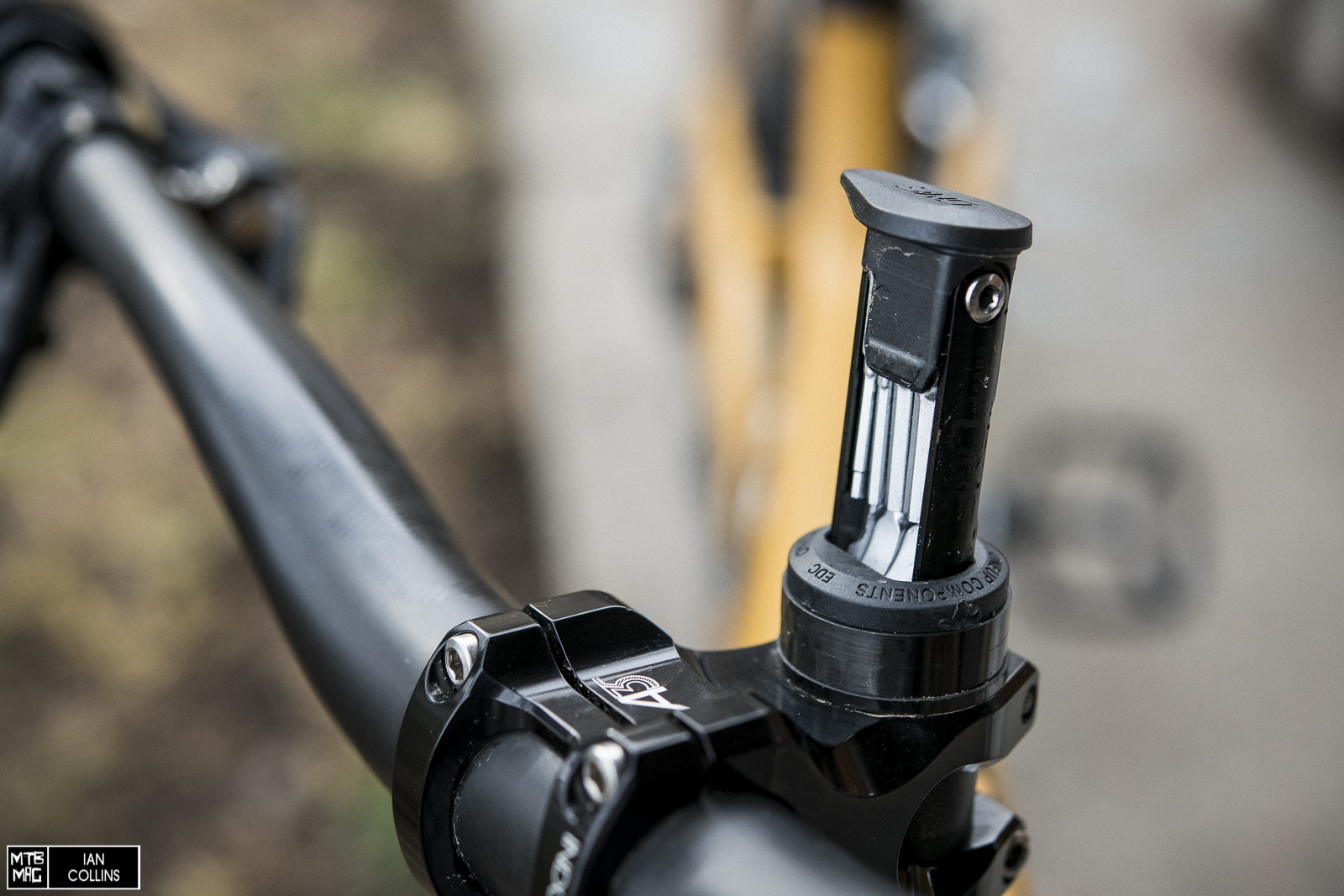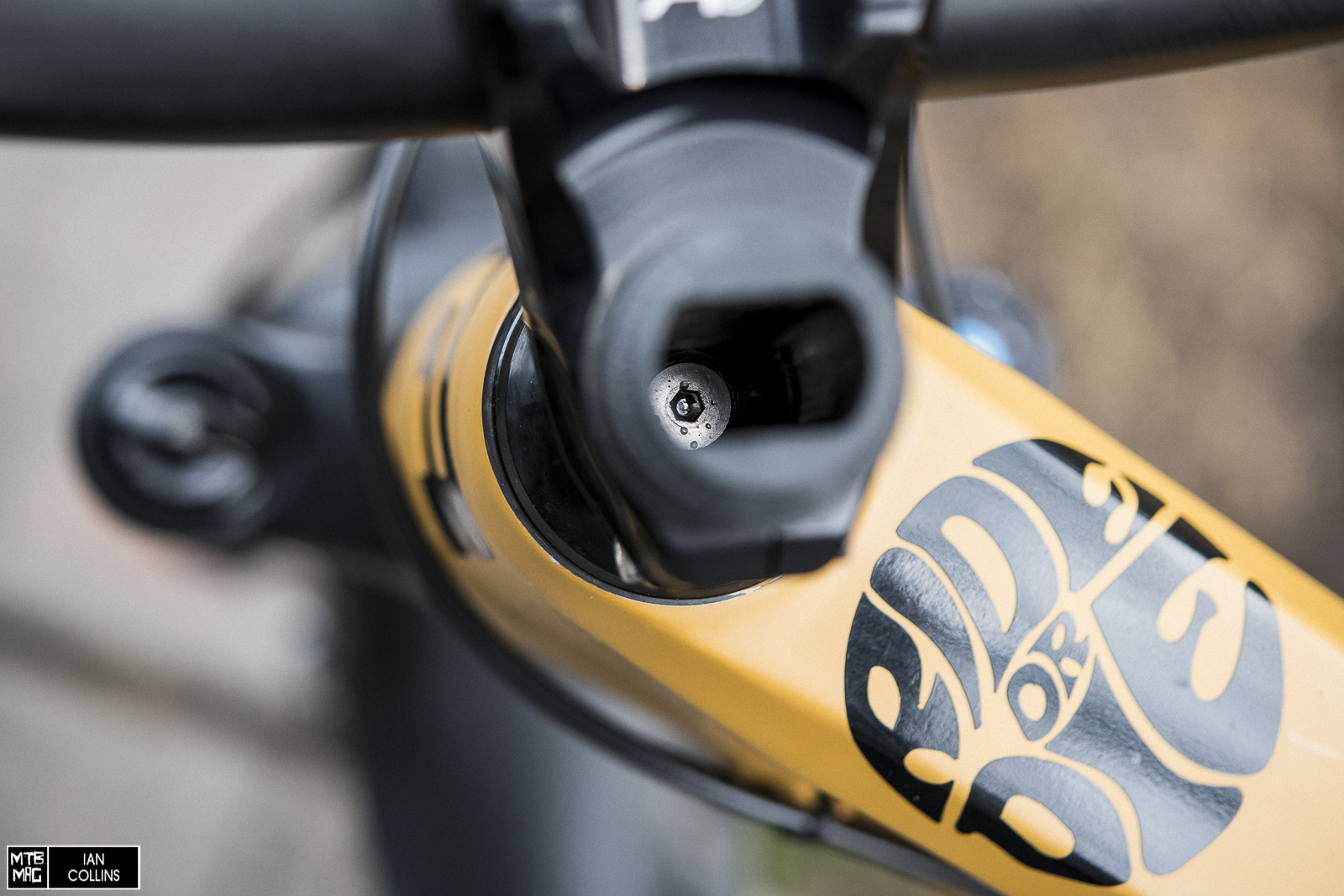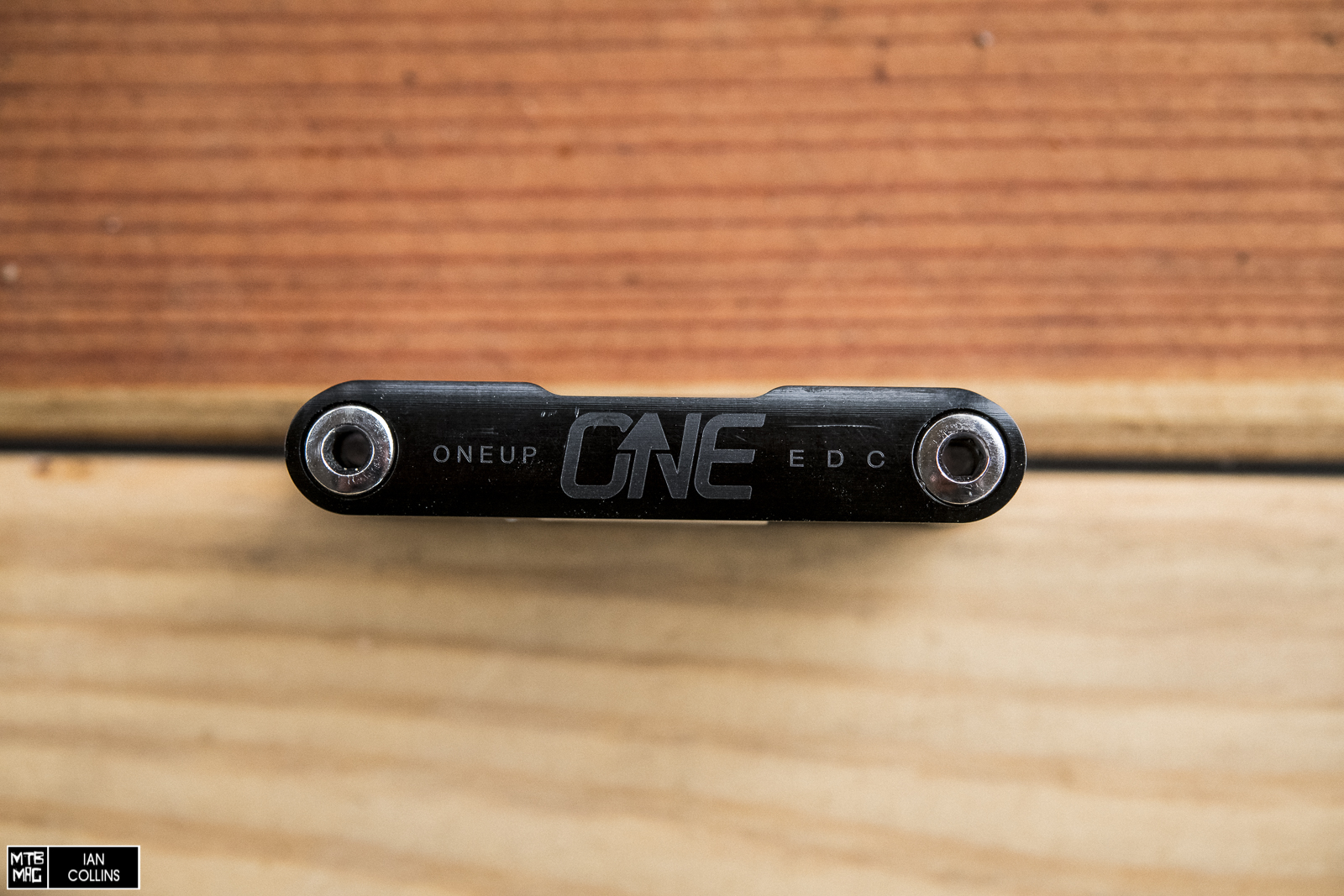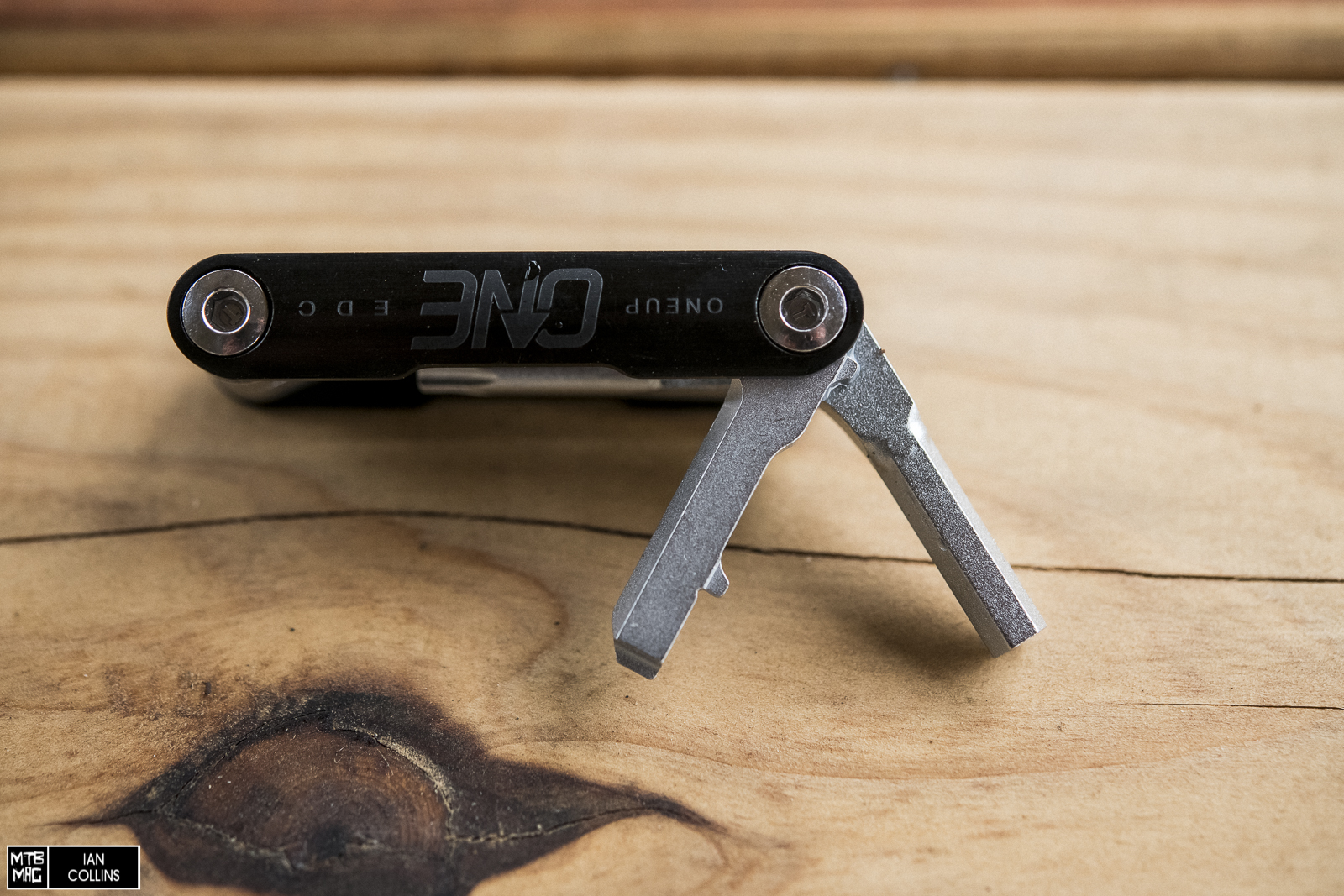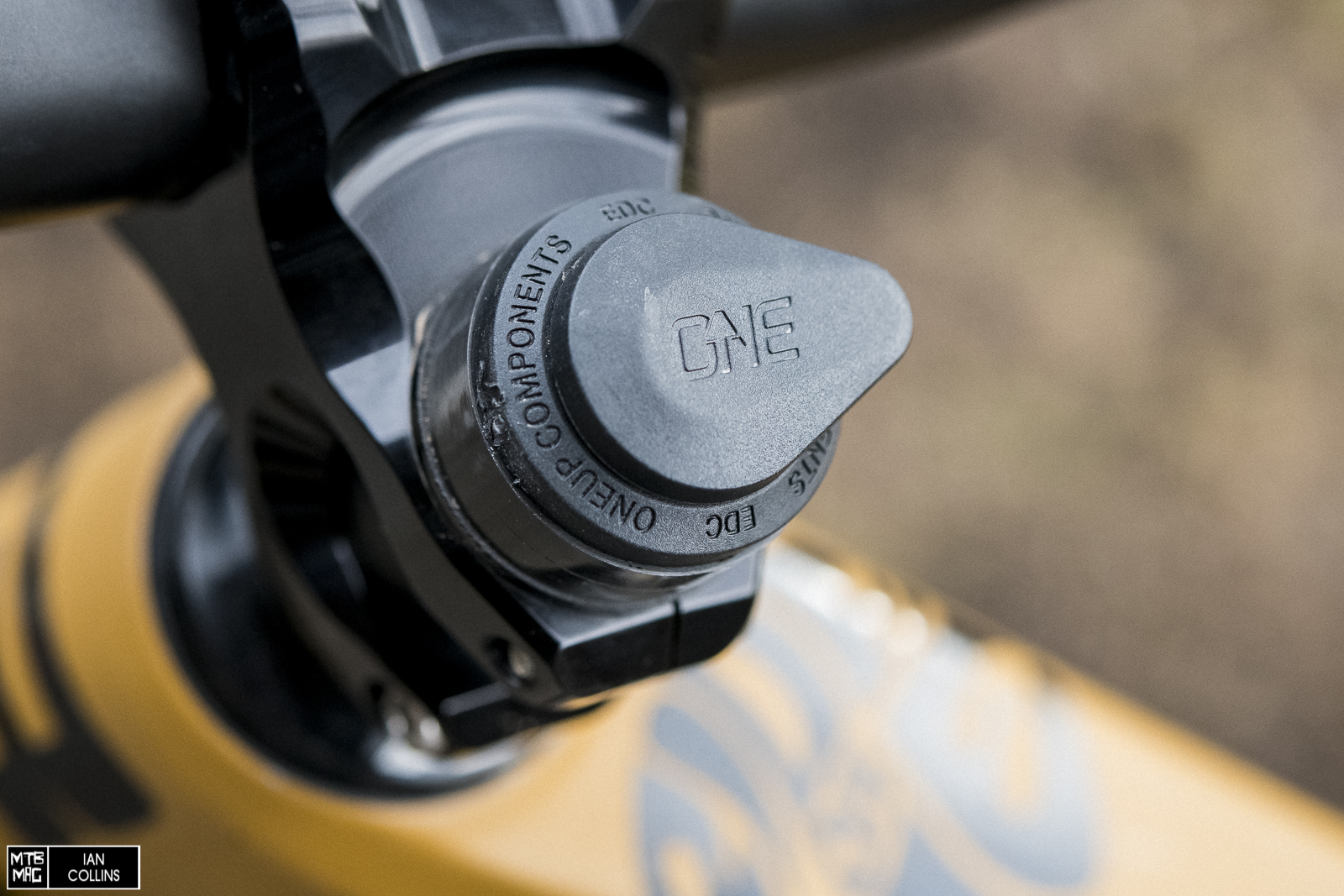[Tested] OneUp Components EDC Lite
Most of us know about OneUp Components EDC – Every Day Carry – a system for storing a plethora of trailside fixes, ranging from multi tools to CO2 cartridges and tire plugs. When EDC first arrived on the market it required the user to tap the threads on their steerer tube. This was an issue for some people as a few manufacturers voided fork warranties if this occurred.OneUp later devised a stem that allows for the same levels of storage without tapping threads. Then, more recently they came up with the EDC Lite, which stores a single multi tool, but doesn’t require the OneUp stem or tapping of threads. I’ve been using it as my go-to for trailside adjustments lately. Read on to see how it’s been working out…
Details
- 75 grams (verified)
- 2, 2.5, 3, 4, 5, 6, 8mm, T25 torx, flathead screwdriver and cassette lockring fitting
- 6 colors (Black, Red, Blue, Green, Orange, Purple, Turqoise)
- $40 USD
There isn’t much to the EDC Lite, aside from the hard plastic cradle, which pulls double duty as a top cap and home to the multi tool, you’ll just see the parts above. The long bolt at the bottom is to help you drive your star fangled nut further down into the steerer tube. Take note: depending on your head tube height and which fork you’re using, you can only tap the star fangled nut so far down.
Once installed, you now use a 4mm allen key to snug up your headset, as shown above.
Pretty straightforward and compact for a tool with ten functions.
There’s actually quite a lot going on up above. The 5mm allen key combines with the flat head screw driver / cassette lock ring combo to make an 8mm key…
The two keys combined, are shown above.
In Use
Starting with installation, this really is just a quick 5 minute process. Remove your top cap, replace your headset screw with the long one sent in the package, then with the top cap to guide it, hammer the long screw down to set your start fangled nut deeper.
Once you’re rolling, the most obvious advantage to steerer tube storage in the fact that you alway shave a multi tool right in front of you at all times. This is nice for little things like making quick trail side adjustments to your seat height, bar roll, brake lever tension, etc. While most of the tools are pretty standard, something worth noting is the sneaky cassette tool. Although most riders no longer use a cassette tool with an actual lockring, this could be used to snug down a SRAM XD cassette or a Centerlock rotor on some setups, which is quite cool. Compared to OneUp’s standard EDC system, the EDC Lite is a bit more stripped down, but it’s also a little less cumbersome – both in installation and in use due to its more minimalist design. The plastic nub that holds the tool and secures it in the steerer did a fine job of keeping things securely in place without making any noise. The multi tool itself was quiet and if it begins to loosen, you can always snug it back up with a 3mm allen key. For how small the tool is, it’s quite sturdy and holds up nicely while allowing for just about any adjustment you’ll need to make on a modern MTB. If you were to lose it, you can replace it independently of the rest of the kit.
While I was quite pleased with the tool itself and how much it manages to pack into a small space, there is one small setback of the whole system. It’s a little difficult to use the multi tool itself to tighten your headset or make adjustments to your handlebar height. This is due to the fact that the plastic tool storage section is a bit resistant to spinning inside of the steerer tube. It’s much easier with a long and skinny 4mm allen key. Therefore, unless you’re carrying one separately it’s a little tricky in the field. Overall, this just means that you should aim to be pretty confident in your setup and ensure everything is snug and straight before you head out. All in all, for $40 this is a great addition to any bike. Because, unlike the Specialized SWAT CC, it works with straight steerer tubes, I even threw one in my downhill bike as it will make trail side tuning and adjustments that much easier.
*This article has been updated. An error was made and initially it was stated that with an EDC Lite installed you need a longer stand alone allen key to adjust headset tension. That was not true and we’ve corrected the article accordingly. Although it is a little difficult, it is possible to adjust the headset with the OneUp multi tool.
The post [Tested] OneUp Components EDC Lite appeared first on MTB-MAG.COM.

